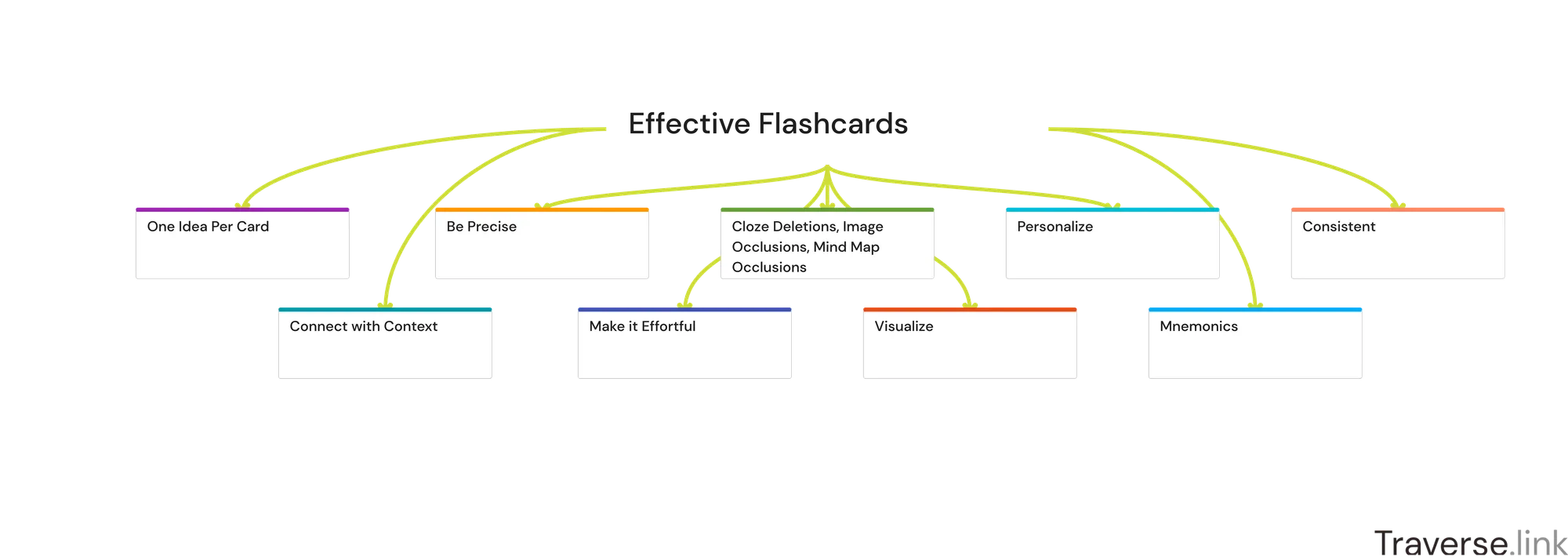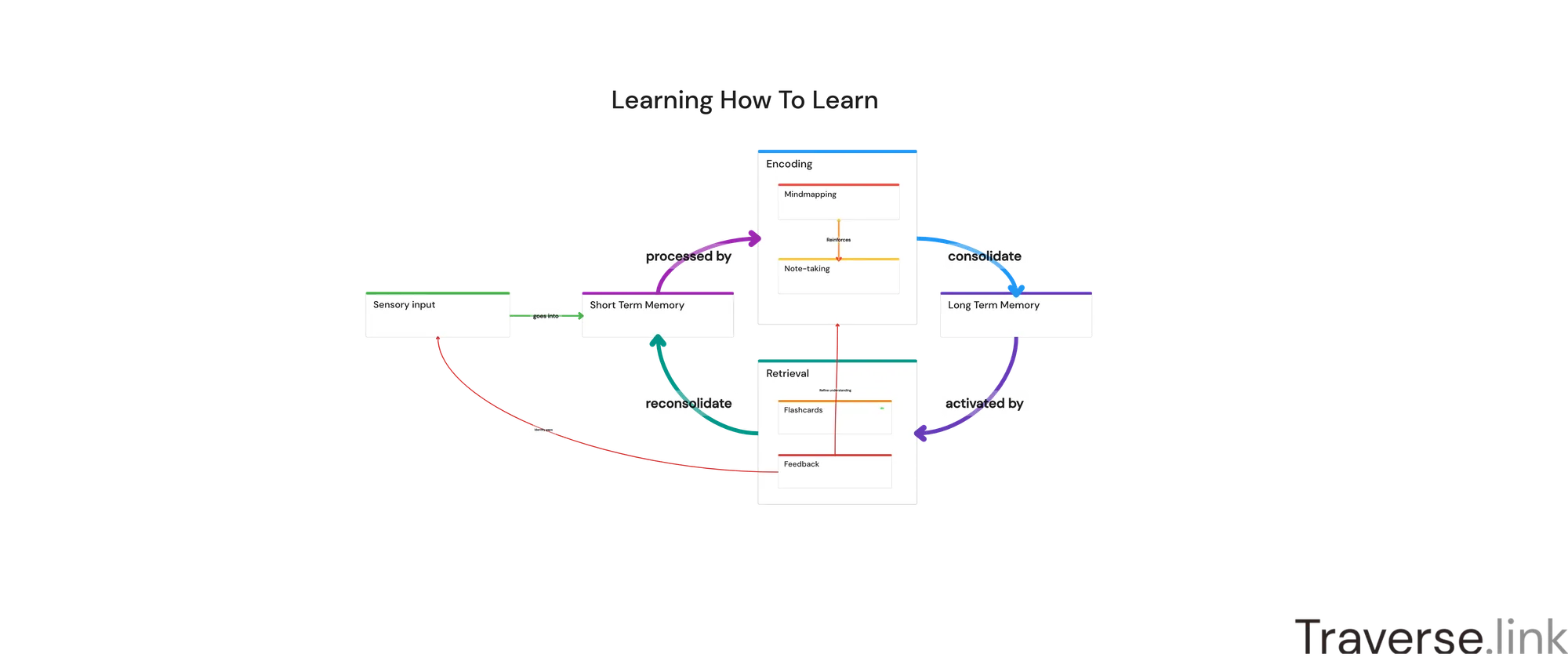I got it all wrong
I’ve been advocating the use of spaced repetition and active recall for quite a while now.
But yesterday, after chatting with Justin Sung (and watching this video)..
.. I realized I lost track of one side of the equation.
Let me explain..
Spaced repetition and active recall are retrieval practices.
Retrieval is when we retrieve knowledge that was previously stored in long term memory.
But how does it get there in the first place?
When we read or hear something, it goes first our short-term memory (STM). In 99.9% of cases, it’s forgotten seconds later. This is a good thing. We don’t want to remember every detail of every day life.
Our short term memory can only hold 7 items at the same time.
So either you forget it, or you have to commit it to long-term memory (LTM).
The process of moving items from STM to LTM is called encoding.

As the word suggests, there are many different ways to encode information and store it in LTM. The encoding you choose matters a lot for how well you remember it.
If you store isolated single items in LTM, they will be forgotten relatively quickly.
In terms of the forgetting curve (see below), the initial decline will be steep.
As I mentioned elsewhere, spaced repetition and active recall will make the forgetting curve decline much slower, so you remember for longer.

But here’s the real insight:
If you improve your encoding, the forgetting curve will decline much slower to begin with!
You save yourself tons of reviews by putting more effort into proper encoding.
And the great thing about doing good encoding is that it gives you these WOW and AHA moments of deep insight. Those moments are a sure sign of learning (whereas flashcard fatigue - the feeling of boredom when reviewing too many cards - means you’re NOT actually learning!).
So.. why is all the fuzz about spaced repetition and do we hear so little about encoding? This will become clear as we start looking into how to actually do good encoding.
Unlike spaced repetition flashcards, good encoding is not an easy recipe that an influencer can explain to you in a 5 minute video and you can start right away. It’s messy, challenging and effortful.
You have to overcome habits like creating notes and flashcards right away when you hear something new. Those are ways to offload information from your brain and reduce cognitive load. But for good encoding, it’s essential to resist that temptation, and hold onto the feeling of confusion a little longer to keep your brain working on it (until you get a WOW).
Now for the good news: I already told you about a lot of techniques which turn out to be very helpful for good encoding. Techniques like mindmapping, connected note-taking, using visual imagery and stories, and connecting it to your personal experience.
But I never talked about them in the context of encoding before, and I never told you why they help (as I was ignorant myself as well).
To better understand why mindmapping and note-taking help encoding, let’s look at something called Bloom’s Taxonomy of Learning.

It distinguishes between lower-order thinking like remembering and understanding (understanding in isolation is still considered lower-level), and higher-order thinkng like analyzing, evaluating and creating.
Remembering isolated facts is the lowest order of thinking.
So how does this relate to encoding? Simple:
Good encoding = higher-order thinking
So when learning something new, you have to aim for higher-order thinking. You don’t need to focus on remembering before going to understanding, applying and so on. Instead, you aim right away for higher-order thinking like analyzing and evaluating. Your brain automatically fills in the lower orders like remembering and understanding.
Focusing solely on remembering first (for example, by immediately creating flashcards) will actually block higher-order thinking, and you will have to unlearn first.
So, how do we do higer-order thinking, like analyzing and evaluating new knowledge?
You guessed it: activities like creating mindmaps, making connections, telling stories and relating to yourself.
There are many more specifics about doing each of these activities to achieve the best encoding, and I’ll talk about them in future emails.
But for now, I hope you take one thing away from this: spend less time doing flashcard reviews of isolated facts, and spend more time encoding. Once it clicks and is fully logical to you, you don’t have to worry so much about forgetting anymore.

Further reading: https://icanstudy.com/wp-content/uploads/2022/08/Report-on-Learning-August-2022.pdf
Read More
Resources





